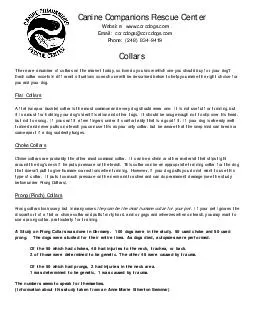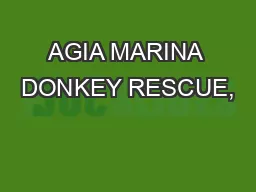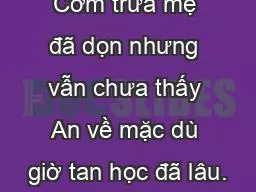PDF-Canine Companions Rescue Center Website: www.ccrcdogs.com Email: ccr
Author : celsa-spraggs | Published Date : 2016-03-07
Collars Flat Collars A flat snap or buckle collar is the most Choke collars are probably the other most common collar r material that slips tight around the dog146s
Presentation Embed Code
Download Presentation
Download Presentation The PPT/PDF document "Canine Companions Rescue Center Website:..." is the property of its rightful owner. Permission is granted to download and print the materials on this website for personal, non-commercial use only, and to display it on your personal computer provided you do not modify the materials and that you retain all copyright notices contained in the materials. By downloading content from our website, you accept the terms of this agreement.
Canine Companions Rescue Center Website: www.ccrcdogs.com Email: ccr: Transcript
Download Rules Of Document
"Canine Companions Rescue Center Website: www.ccrcdogs.com Email: ccr"The content belongs to its owner. You may download and print it for personal use, without modification, and keep all copyright notices. By downloading, you agree to these terms.
Related Documents














